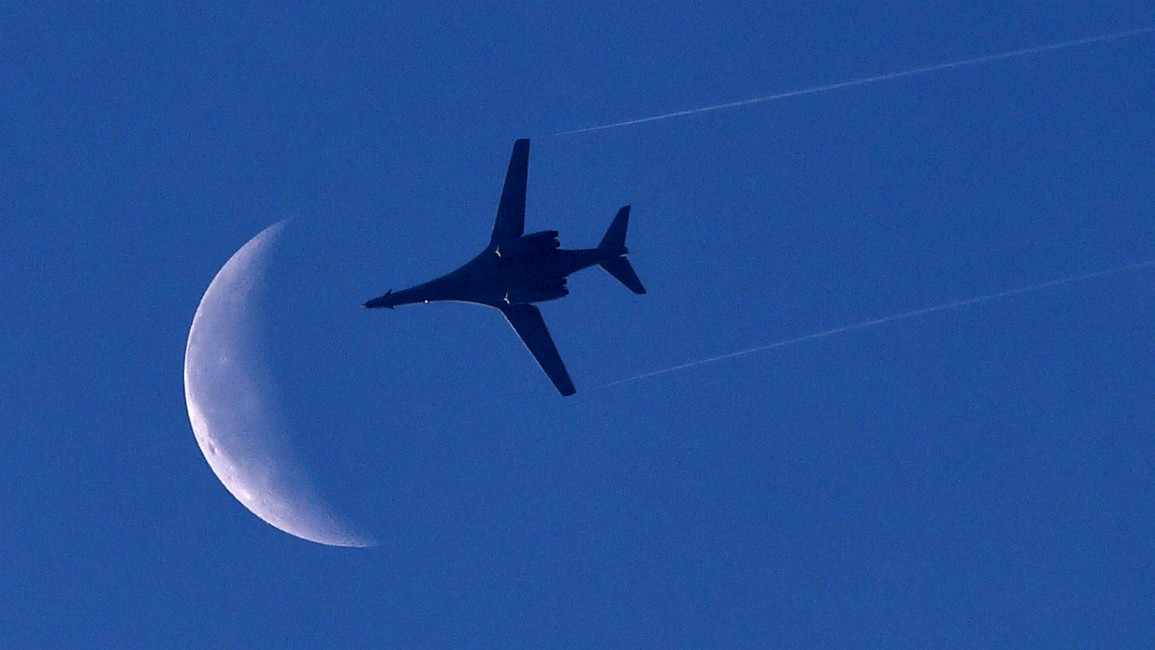US airstrikes focus on destroying IS oil infrastructure
The US and its international coalition partners are now targeting oil production facilities in an attempt to destroy the Islamic State group's finances, US officials said this week.
The IS group reportedly earns an estimated $40 million a month from its illegal oil sales, a key source of income for the group.
"We intend to shut it all down," said Colonel Steven H Warren, a Pentagon spokesman in Baghdad, the New York Times reported.
Coalition airstrikes have until recently only periodically struck IS oil production, and the group's engineers have been able to repair the damage relatively quickly.
US officials said airstrikes would now target parts of the group's oil infrastructure that takes longer to repair or requires specially ordered parts, the newspaper reported.
They aim to put specific installations out of commission for at least six months to a year, the officials said.
| The objective is to weaken the financial capacity of Islamic State by disrupting the exploitation of oil resources - French Defence Ministry |
French warplanes hit two oil distribution centres and a gas separation factory in IS-controlled territory in eastern Syria on Monday and Tuesday, Reuters reported.
"The objective is to weaken the financial capacity of Islamic State by disrupting the exploitation of oil resources in zones under the control of this terrorist group," the French Defence Ministry said in a statement.
This goes beyond the original stated aim of French airstrikes - protecting Syrian civilians and preventing attacks on French interests.
This new coalition strategy was first put into action when US bombers and coalition warplanes hit 26 targets in one of the largest oilfields in Syria on 21 October. The field is believed to have been producing about a third of its pre-war capacity.
US analysts believe the field generated between $1.7 million and $5.1 million a month for the IS group.
The goal of the air campaign over the next few weeks is to cripple eight major oil fields, about two thirds of IS oil production.
This new strategy focuses on weakening the group in the longer term, a marked contrast with the strategy of direct attrition the coalition has for the most part been following thus far.
It is an indirect admission that the air campaign has been much less effective than expected when the US started airstrikes against the group in August last year.
Airstrikes are not enough
A senior US Air Force official said on Tuesday that though the IS was being weakened by airstrikes, "boots on the ground" were needed to actually retake territory.
Though the US recently announced it was sending 50 special operations soldiers to assist forces fighting IS and in targeting airstrikes, the ground troops to which the US administration was referring are Kurdish, Syrian and Iraqi.
Thus far, the Kurds have been Washington's most successful "boots on the ground" partners. Over the past year, Kurdish forces with coalition air support have halted IS advances in the north of Syria and Iraq and taken back some limited-though-strategically-important territory from the group.
US airstrikes are currently supporting a Kurdish advance on Iraq's Sinjar Mountain region, which the IS took last year, killing thousands of the region's Yazidi men and enslaving thousands of Yazidi women.
On Thursday, the Kurds took a key IS supply route for its forces in the strategically important town of Sinjar.
Russian airstrikes have so far mostly focused on anti-regime forces in Syria rather than IS fighters.
Turkish airstrikes, meanwhile, have struck Kurdish targets in Syria and Iraq. Turkey is currently fighting an insurgency led by Kurdish separatists.


![Minnesota Tim Walz is working to court Muslim voters. [Getty]](/sites/default/files/styles/image_684x385/public/2169747529.jpeg?h=a5f2f23a&itok=b63Wif2V)




![Debris near Rafic Hariri International Airport [Getty]](/sites/default/files/styles/image_330x185/public/2176162423.jpeg?h=a5f2f23a&itok=MCSK9mkM)
![An Israeli air strike on Jabalia killed teenage journalist Hassan Hamad [Screengrab/X]](/sites/default/files/styles/image_330x185/public/2024-10/hassan%20hamad1.jpg?h=c12e0b96&itok=Rd_dyCVp)
